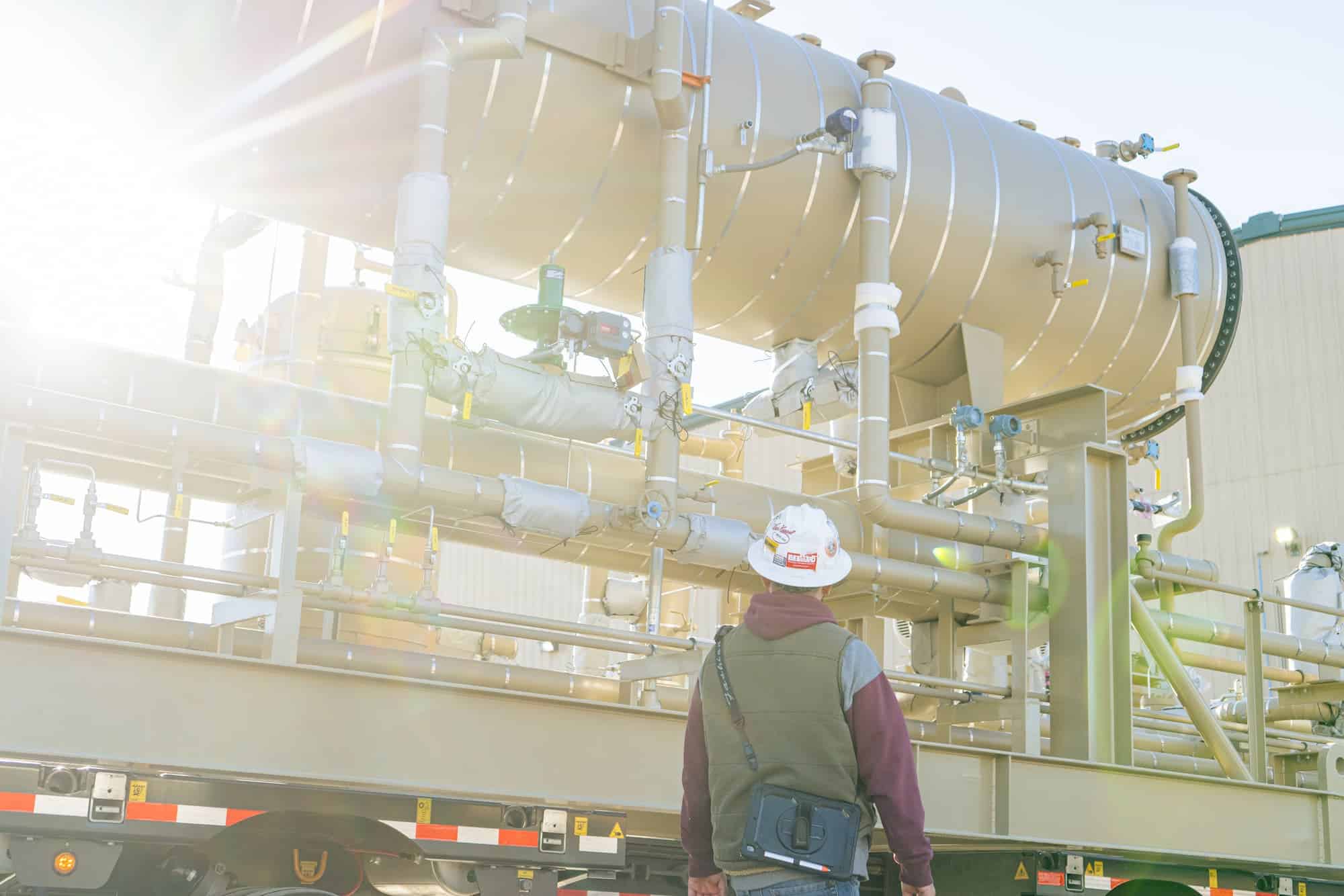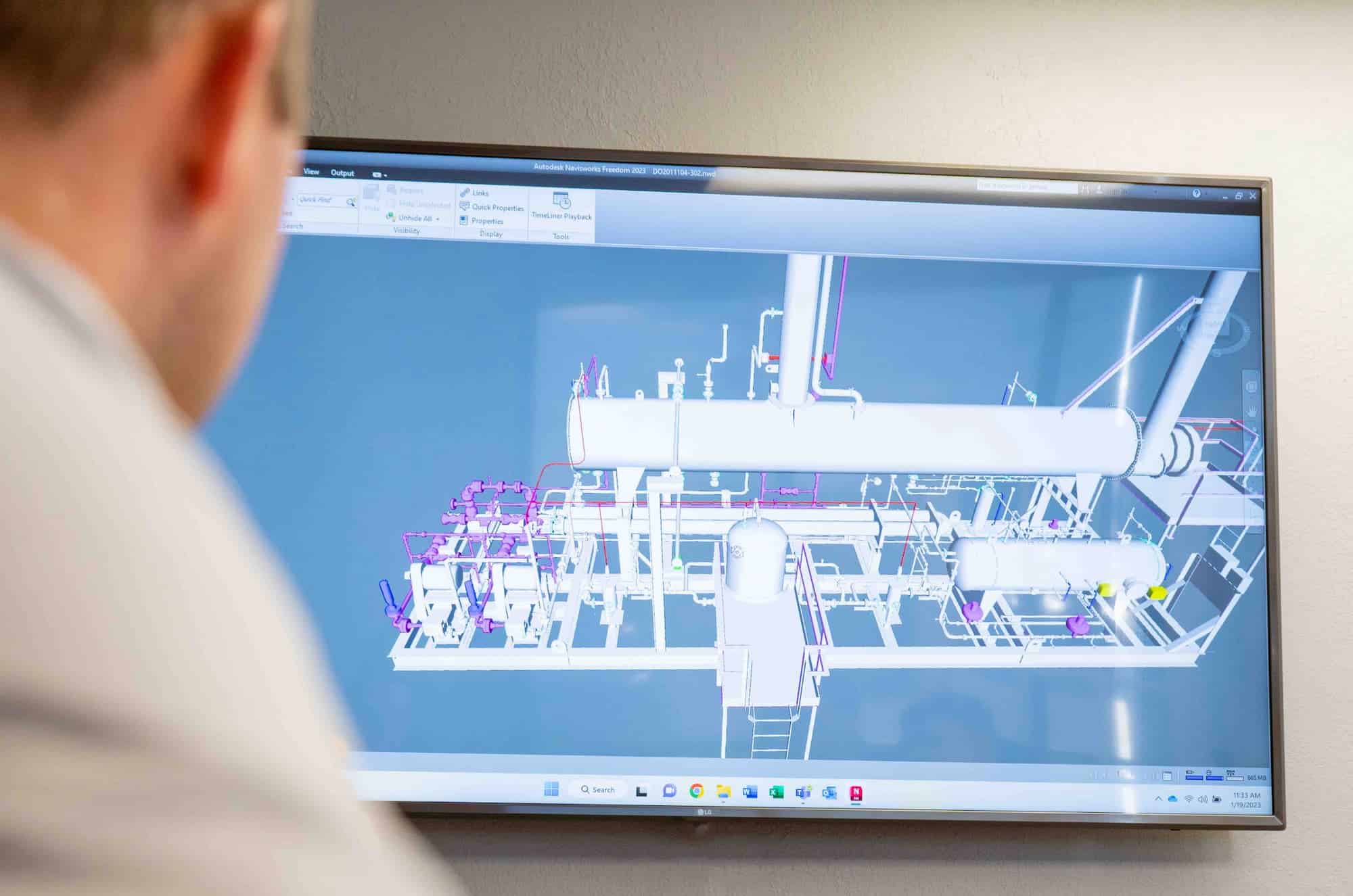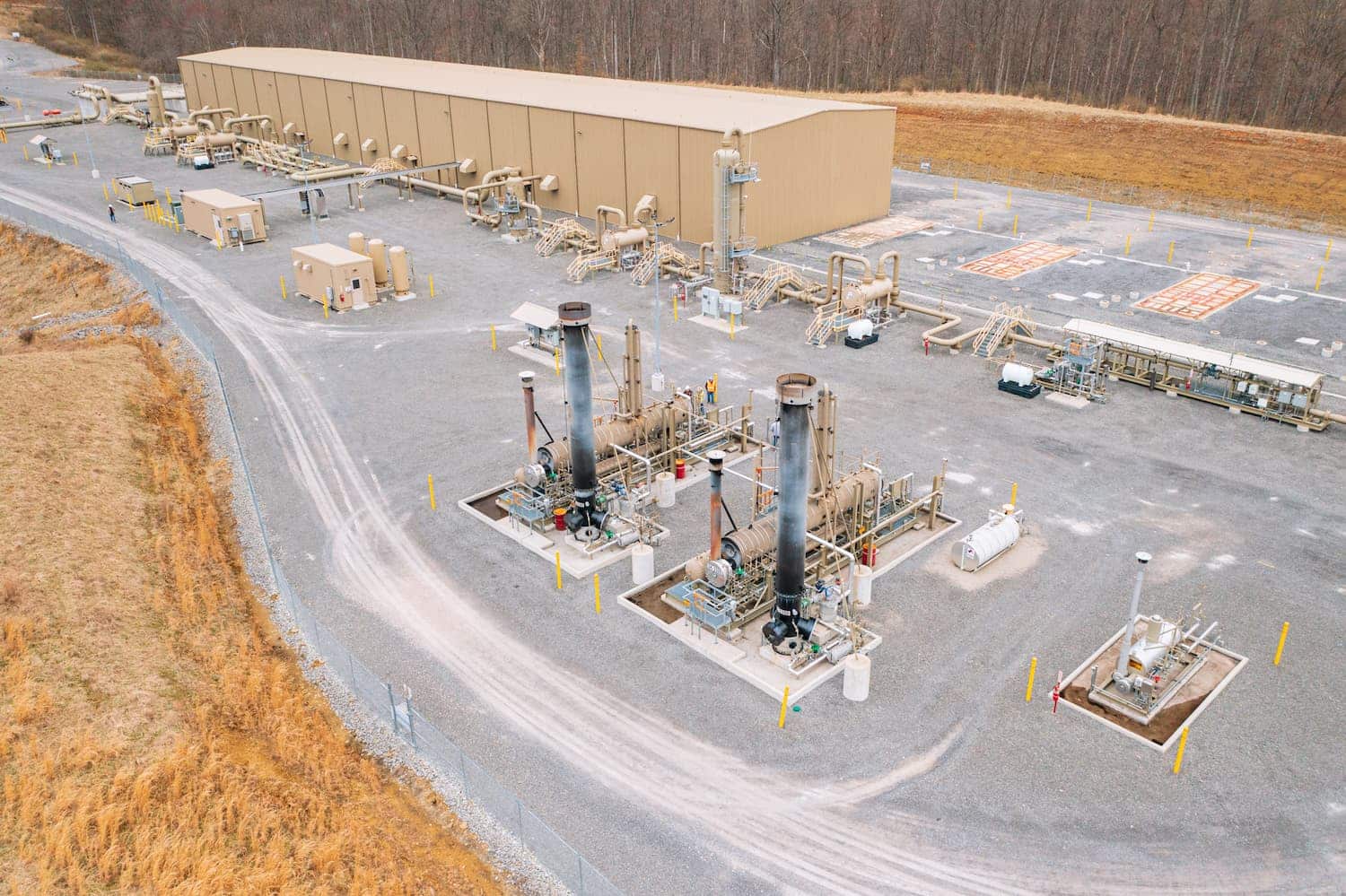What Is a Gas Dehydration Unit? A Practical Guide for Facilities
Natural gas, as it comes out of the ground, isn’t always ready for use. It often contains water vapor, which can cause operational problems such as corrosion, hydrate formation, and reduced efficiency in downstream equipment. To make natural gas market-ready and ensure safe transport, facilities rely on gas dehydration units (GDUs).
This practical guide explains what GDUs are, why they matter, and how GDU system design can be tailored to meet the specific needs of your facility.
What Is a Gas Dehydration Unit (GDU)?
A gas dehydration unit is a process system designed to remove water vapor from natural gas streams. The most common type uses glycol-based absorption, where a liquid desiccant (typically triethylene glycol, or TEG) absorbs water vapor from the gas.
Other approaches, such as solid desiccant systems, are also used depending on the operational requirements. Regardless of the method, the goal is the same: reduce the water content of natural gas to prevent operational issues and meet pipeline specifications.
Why Gas Dehydration Matters
Water vapor in natural gas can create significant problems if left untreated:
Hydrate Formation: Water and hydrocarbons can form ice-like blockages under high-pressure, low-temperature conditions. These blockages can plug pipelines and equipment.
Corrosion: Water combined with CO₂ or H₂S forms corrosive acids that damage steel piping and vessels.
Reduced Efficiency: Excess water reduces heating value and causes operational instability.
Pipeline Specs: Gas must meet strict specifications for water content before it enters transmission systems.
By using a GDU, facilities protect equipment, maintain safe operations, and ensure compliance with commercial standards.

The Basics of GDU System Design
Every facility has unique operating conditions. That’s why GDU system design involves more than installing a standard piece of equipment—it requires customization based on gas composition, flow rate, temperature, and pressure. Key design considerations include:- Inlet Gas Conditions
- Pressure and temperature affect water vapor content.
- Sour gas streams may require specialized materials of construction.
- Desired Outlet Specifications
- Pipelines typically require less than 7 lb of water per million standard cubic feet (MMSCF).
- Some petrochemical applications require even drier gas.
- Absorption Medium
- Glycol systems (most common) use TEG or DEG for continuous water removal.
- Solid desiccants such as silica gel or molecular sieves are used where ultra-dry gas is required.
- Regeneration Process
- GDUs must continuously regenerate glycol or desiccant to keep systems operational.
- Regeneration units are sized based on circulation rates and required dew point depression.
- Facility Integration
- Space constraints, heat availability, and tie-in locations all influence final system design.

Types of Gas Dehydration Units
While the term “GDU” often refers to glycol dehydration, there are multiple approaches:
- Glycol Dehydration Units
- Most widely used in the oil and gas industry.
- Relatively low operating costs and continuous operation.
- Effective for pipeline-quality specifications.
- Solid Desiccant Dehydration Systems
- Used when ultra-low water content is required.
- Higher capital and operating cost.
- Common in cryogenic or LNG facilities.
- Hybrid Systems
- Combine glycol with solid desiccants.
- Used for specialized applications with demanding requirements.
Common GDU Challenges
Like any process system, gas dehydration units face operational challenges that require routine monitoring and troubleshooting:
- Foaming in glycol systems due to contaminants.
- Carryover of glycol into the gas stream, increasing OPEX.
- Corrosion in reboilers from oxygenated glycol.
- Scaling and fouling in heat exchangers.
These issues can lead to efficiency loss, downtime, or premature equipment failure. Regular inspections and optimization strategies minimize these risks.
Customizing GDUs for Facility Needs
No two facilities are identical, which is why GDU system design is never one-size-fits-all. Factors like gas composition, production rate, and downstream requirements drive customization.
Examples of customization include:
- Materials of construction to handle sour gas.
- Specialized regeneration systems for energy efficiency.
- Integration with waste-heat recovery for reduced fuel usage.
- Compact designs for offshore platforms or space-limited facilities.
At Total Product Services, we work closely with facility teams to design GDUs that fit seamlessly into their operations.
👉 Learn more about our Consulting, Design, & System Services
The Role of Process Modeling and Optimization
Once a GDU is in place, the job doesn’t end. Facilities benefit from ongoing process modeling and optimization to ensure the system performs at peak efficiency. Advanced simulation tools can:
- Predict hydrate formation under varying operating conditions.
- Optimize circulation rates to reduce fuel and chemical usage
- Extend the life of equipment through predictive maintenance.
This level of insight allows operators to reduce downtime, cut costs, and maximize throughput.
👉 Explore our Process Modeling & Optimization Services

Installation, Startup, and Commissioning
A well-designed GDU still requires proper installation and commissioning to function as intended. During startup and commissioning, system checks confirm that controls, pumps, and regeneration units are operating within design parameters.
Skilled teams not only bring the system online safely but also train operators to monitor and adjust performance. Partnering with an experienced service provider reduces the risk of costly startup issues.
Looking Ahead: The Future of GDUs
With ongoing emphasis on environmental performance and efficiency, GDUs are evolving:
Energy-Efficient Regeneration: Lowering fuel use while maintaining performance.
Emission Controls: Reducing VOC emissions from glycol reboilers.
Digital Monitoring: Incorporating sensors and automation for real-time optimization.
These trends make GDUs more reliable, efficient, and environmentally responsible than ever.
Conclusion
A gas dehydration unit is a critical component of natural gas processing, ensuring that facilities meet safety, efficiency, and regulatory requirements. From preventing hydrates to protecting pipelines, GDUs safeguard operations and ensure compliance with commercial specifications.
By focusing on custom GDU system design, ongoing optimization, and expert startup support, facilities can maximize uptime and minimize long-term costs.
Total Product Services delivers comprehensive support—from design to commissioning—to ensure your GDU performs optimally.
Ready to Optimize Your Process?
If you’re designing new equipment, upgrading an existing facility, or troubleshooting performance, TPS is ready to help.
Learn more about our Process Modeling & Optimization Services or contact our team to discuss your project.
Ready to get started with Total Product Services?



